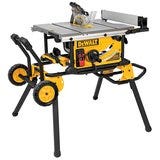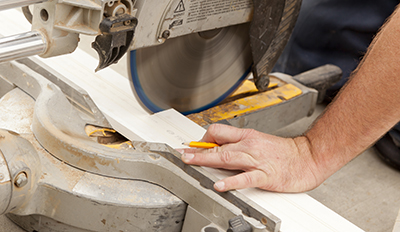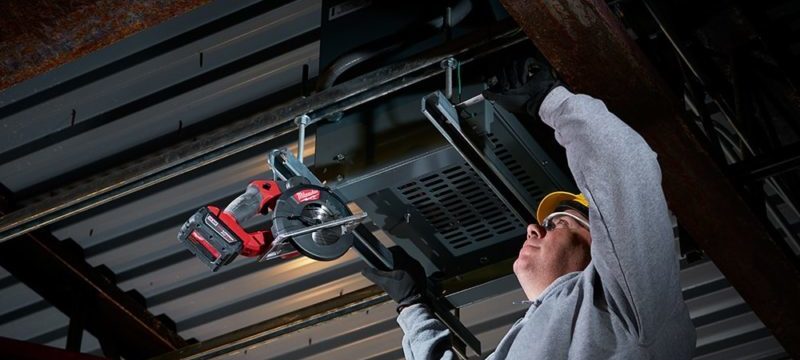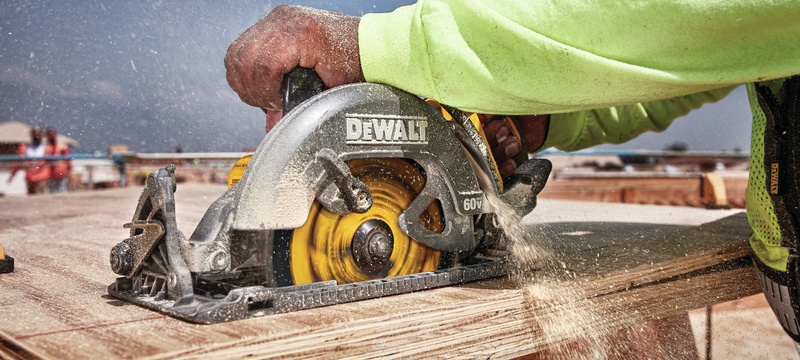Are you new to woodworking and looking to dive into the realm of using a circular saw? You may be already familiar with circular saws but want to refine your skills and make even cleaner cuts. Whether you are a beginner or an expert, this article shares nine helpful circular saw tips. From safety techniques to blade selection, maintenance, and more, read on to become a circular saw pro!
Circular Saw Safety Techniques
Prioritizing safety is crucial before starting any project. Always wear protective gear like safety goggles, earmuffs, and a dust mask. Avoid wearing loose clothing and jewelry to prevent any accidents from occurring. Ensure your workspace is well-lit and clear of any debris or obstacles that could create a hazard while using the circular saw.
Choosing the Right Circular Saw Blade
Choosing the correct circular saw blade is essential for achieving precise and smooth cuts—different blade designs cut through various materials, such as wood, metal, or plastic. Consider the material you will work with and choose a blade with the appropriate tooth count and type. Ensure you select a blade with more teeth for fine cuts, while rough cuts may require fewer teeth.

Maintenance
Proper maintenance of your circular saw is essential to keep it in optimal working condition. Keep the saw clean and lubricated, following the manufacturer’s guidelines. Regularly inspect the blade for wear or damage, such as chipped, dullness, or missing teeth. A clean and well-maintained circular saw will not only last longer but will also ensure smoother cuts.
Cutting Tips
There are a few techniques to keep in mind to achieve clean and accurate cuts with a circular saw. First, ensure you set the blade to the appropriate depth for the material. Adjust the saw’s cutting angle and be mindful of the direction of the wood grain. Using a straightedge or guide is also helpful to ensure a straight cut. Take your time and let the saw do the work – avoid forcing it through the material.
Usage for Beginners
If you are new to using a circular saw, familiarize yourself with the basic controls and adjustments. Begin by cutting scrap wood to get a feel for the saw’s capabilities before moving on to complex projects. Practice cutting techniques and start with simple tasks. As you gain confidence and experience, you can expand your woodworking skills.
Circular Saw vs Table Saw Comparison

Both circular and table saws have advantages and are suitable for different applications. Circular saws offer portability and versatility, allowing you to work in various locations. Table saws excel in precision and stability for larger projects. Consider your needs and project requirements before deciding which type of saw best fits your workshop.
Circular Saw Blade Selection
Consider the type of cut you want to achieve and select the appropriate edge for the job. Rip-cut blades cut along the wood grain, while crosscut blades are ideal for cutting across the grain. Combination blades offer a mix of both and are suitable for general woodworking tasks. Choose the right edge to maximize your cutting efficiency.
Tricks for Clean Cuts
You can employ a few tricks to achieve clean cuts with your circular saw. Low-tack masking tape on the cutting line can help prevent splintering and create a more pristine edge. Making multiple passes with the saw gradually increases the cutting depth, improving the cut’s quality. Investing in a quality saw with a built-in laser guide enhances your accuracy.
Safety Gear
You should always wear safety goggles, a face shield, and earmuffs when using a circular saw. A dust mask or approved respirator is also a clever idea if you generate a lot of dust. For increased safety, circular saws should be equipped with guards above and below the base plate. Stand slightly to the side using a circular saw to avoid kickbacks and not overextend your body. This will help you ensure you are always balanced and in control of the saw. You should also always check the blade for sharpness, as a sharp blade will make faster, safer cuts.
Circular Saw Jigs and Guides
Circular saw jigs and guides can further enhance your cutting accuracy and efficiency. Straight-edge guides are invaluable for precise rip cuts, while a crosscut sled allows for accurate crosscuts. DIY or store-bought jigs can help create consistent shapes or angles, making complex cuts easier. Explore the variety of jigs and guides available to take your circular saw projects to the next level.
In conclusion, mastering the art of using a circular saw involves a combination of technique, practice, and proper equipment. Implement these circular saw tips, from safety techniques to blade selection, maintenance, and use of jigs and guides. You will strengthen your woodworking skills and achieve cleaner and more accurate cuts. Remember, prioritize safety, invest in the right tools, and never stop learning and improving your techniques. Happy sawing!




